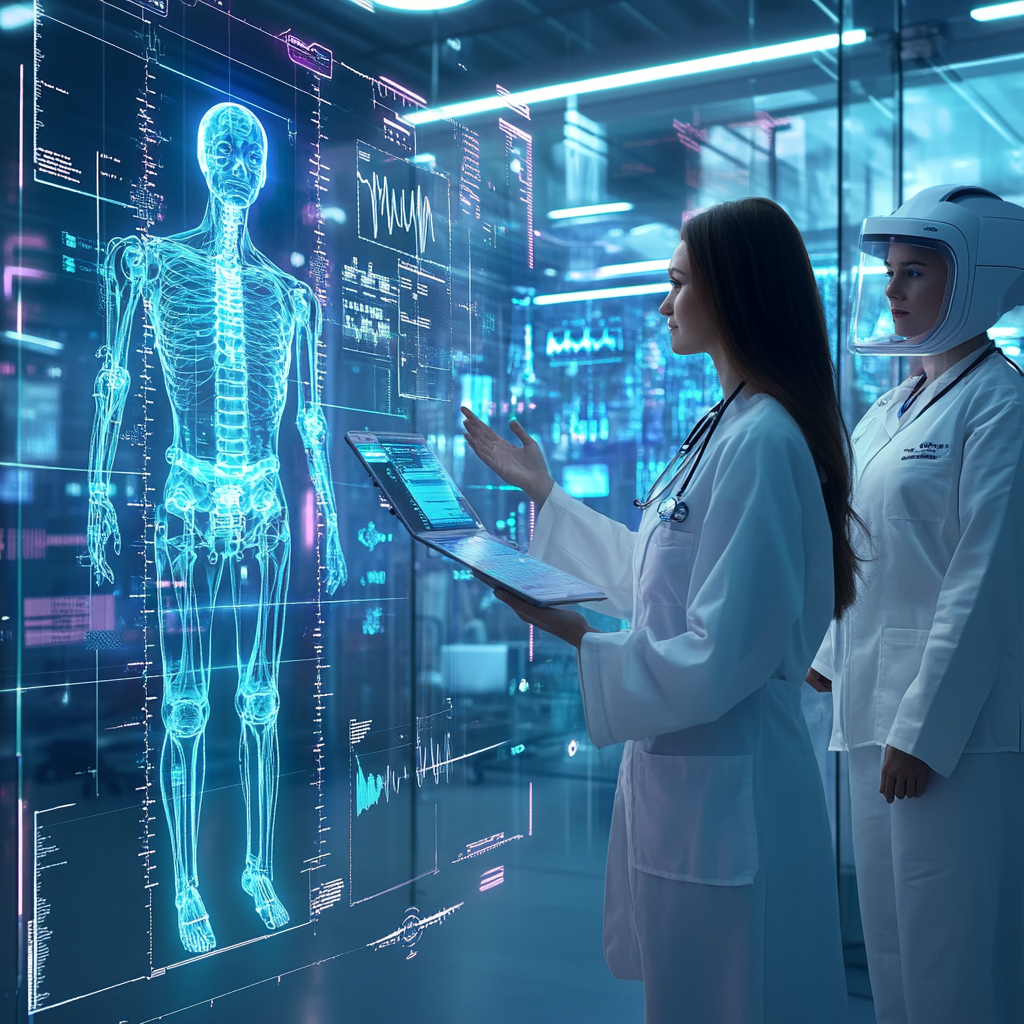AI Revolution in Clinical Diagnostics: Enhancing Decision-Making and Clinician Skills
Artificial intelligence is transforming emergency medicine and clinical diagnostics, creating a dual revolution: powerful decision support tools for immediate patient care and sophisticated training systems that enhance clinicians' diagnostic capabilities over time.
AI-Powered Decision Support in Emergency Settings
In high-pressure emergency departments, AI tools are now augmenting clinician judgment at critical decision points. TriageGO, developed at Johns Hopkins, integrates with electronic health records to analyze patient symptoms, vital signs, and medical history within seconds, helping nurses consistently identify low-risk patients and improve patient flow. Similarly, Kaiser Permanente's triage tool leverages machine learning models trained on millions of ED encounters to predict critical illness and hospital admission needs.
Beyond triage, deep learning algorithms now provide real-time prediction of serious events like cardiac arrest, with discriminative abilities exceeding traditional models (AUROC > 0.9). These systems continuously refine their predictions as new patient data becomes available, enabling dynamic risk assessment that keeps pace with changing patient conditions. A 2023 study demonstrated that AI-enhanced clinical decision support reduced time-to-treatment for critical conditions by 17% and decreased diagnostic errors by 22% compared to standard protocols.
From Diagnosis to Training: AI as the Clinical Skills Accelerator
The impact of AI extends beyond immediate decision support into long-term clinical skill development. AI-driven platforms like MedSimAI create continuous learning loops through deliberate practice, allowing clinicians to engage in repeated, scenario-based training with virtual patients. These systems provide immediate feedback on diagnostic reasoning, helping medical professionals iteratively refine their approach.
This reinforcement learning shows impressive results: 30% faster skill acquisition in simulation environments and up to 14.7% accuracy gains for radiographers using AI-enhanced training tools. In a 2024 multi-center study, emergency departments using AI-driven quality improvement tools saw a 20% reduction in ICU admissions through early sepsis detection. Beyond individual cases, AI systems track clinicians' historical decisions to identify recurring gaps—like consistently missed pulmonary embolisms—and deliver targeted feedback addressing these specific weaknesses. Hospitals implementing such personalized feedback systems reported a 25% reduction in repeated diagnostic mistakes in follow-up assessments.
Real-Time Error Correction and Bias Mitigation
One of AI's most valuable contributions is identifying cognitive biases in diagnostic thinking. By flagging anchoring bias or premature closure and suggesting alternative diagnoses during live patient encounters, these systems help clinicians avoid common reasoning pitfalls. In one study, AI feedback reduced medication-related errors by 40% by alerting clinicians to overlooked drug interactions.
Similarly, image analysis support tools have demonstrated significant improvements in diagnostic accuracy. Radiographers using AI heatmaps and confidence scores improved diagnostic accuracy by 13.4% when the AI was correct, though errors increased when the AI itself was wrong—highlighting the importance of thoughtful human-AI collaboration.
The Trust Balance: Optimizing Human-AI Relationships
While the benefits are substantial, effective implementation requires careful attention to trust dynamics. Studies show clinician trust in AI declines if models err frequently, and diagnostic accuracy improves most when AI explanations accompany confidence scores rather than presenting as black-box recommendations.
The most successful systems balance automation with transparency, explaining AI reasoning to maintain engagement while enabling clinicians to develop their own critical thinking skills rather than becoming dependent on algorithmic suggestions.
Case Study: AI Implementation Success at Mayo Clinic
Mayo Clinic's implementation of an AI-powered diagnostic platform demonstrates the real-world impact of these technologies. After integrating an AI system that analyzed ECG data to detect previously undiagnosed cardiac conditions, clinicians identified 125% more cases of left ventricular dysfunction than standard protocols alone. The system now reviews thousands of ECGs daily, flagging subtle patterns human readers might miss while providing explanations that enhance cardiologists' pattern recognition skills over time.
The key to Mayo's success wasn't just the algorithm's accuracy but their implementation approach: phased rollout, dedicated clinician training, and continuous feedback loops that improved both the AI and the medical team's performance. As one cardiologist noted, "The system doesn't replace our expertise—it amplifies it while simultaneously teaching us to see patterns we might have overlooked."
Implementation Challenges and Practical Considerations
Despite promising results, healthcare organizations face significant hurdles when deploying AI diagnostic systems:
Integration complexity: Connecting AI tools with existing EHR systems and clinical workflows requires substantial technical resources and stakeholder alignment.
Regulatory navigation: FDA approval pathways for AI-based clinical decision support remain evolving and complex.
Ethical data governance: Ensuring patient privacy while collecting enough data to train and validate models presents ongoing challenges.
Clinician resistance: Overcoming skepticism and workflow disruption requires thoughtful change management and demonstrable value.
Organizations succeeding in this space typically establish cross-functional AI governance committees, invest in technical infrastructure, and create dedicated implementation teams that include both technical experts and clinical champions.
Future Directions: Integrated Learning Ecosystems
As these technologies mature, we're seeing the emergence of comprehensive clinical intelligence ecosystems that combine immediate decision support with longitudinal skill development. By integrating real-time assistance, deliberate practice, and personalized feedback, AI is transforming diagnostic training from episodic to continuous improvement—ultimately enhancing both immediate patient outcomes and long-term clinical expertise.
The next frontier will likely involve more sophisticated integration of wearables and IoT devices with AI systems, creating even richer data streams for both real-time decision support and clinician training. As these tools continue to evolve, the focus must remain on creating collaborative human-AI partnerships that amplify clinical judgment rather than replace it.
Conclusion: Actionable Steps for Healthcare Leaders
For healthcare organizations looking to leverage AI in clinical diagnostics, consider these key actions:
Start small, scale strategically: Begin with focused use cases where AI can address specific clinical challenges with measurable outcomes.
Invest in human-centered design: Ensure AI tools enhance clinician workflows rather than disrupting them, with interfaces that promote learning and skill development.
Build robust validation processes: Implement continuous monitoring of AI system performance against gold standards and diverse patient populations.
Develop digital literacy programs: Train clinicians not just to use AI tools but to understand their limitations and effectively incorporate their insights into clinical reasoning.
Create feedback mechanisms: Establish channels for clinicians to report AI performance issues and contribute to system improvements.
The AI revolution in clinical diagnostics isn't just about faster or more accurate diagnoses—it's about creating a new paradigm where technology and human expertise evolve together, each making the other stronger. Healthcare organizations that approach implementation with this mindset stand to gain not just improved metrics but fundamentally enhanced clinical capabilities that benefit patients and providers alike.

